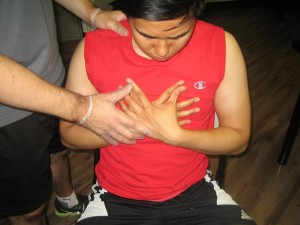Hyperventilation is described as breathing that is rapid and deeper than normal. It results to a drop in the amount of carbon dioxide in the blood. This can cause lightheadedness, rapid heart rate and shortness of breath. In addition, it also results to tingling or numbness in the hands or feet, fainting, anxiety and sore chest muscles.
Some of the causes of abrupt hyperventilation include fever, anxiety, strenuous exercise, certain medications and emotional stress. It can also occur due to issues caused by asthma or emphysema or a head injury. Nevertheless, it occurs most often among those who are tense or nervous, breathe in a shallow manner and have other medical conditions such as panic disorder or lung diseases.

Indications of hyperventilation
The signs and symptoms of hyperventilation typically last for 20-30 minutes and can include the following:
- Frequent episodes of yawning or sighing
- Feeling nervous, anxious or tense
- Feeling of not getting enough air or there is a need to sit up to breathe
- Pounding and racing heart rate
- Issues with balance, vertigo or lightheadedness
- Tingling or numbness in the hands, feet or around the mouth
- Chest pain, tightness, tenderness, fullness or pressure
The other indications might occur less frequently and one might not realize that they are linked directly to hyperventilation. These symptoms include:
- Bloating, gas or burping
- Headache
- Twitching
- Visual fluctuations such as tunnel or blurred vision
- Sweating
- Issues with memory or attentiveness
- Losing consciousness
Management
It is important to note that hyperventilation is not a condition but it is best to be assessed by a doctor if repeated episodes occur. If the symptoms are recurrent, the individual might be diagnosed with hyperventilation syndrome.
The treatment for hyperventilation is based on the cause. Treatment at home is enough for mild symptoms. Medical care might be required for symptoms that are moderate to severe, lasts for extended periods of time, recur or disrupt with daily activities. The treatment typically includes stress reduction techniques, reassurance, breathing lessons or medications.
More Information / Disclaimer
The information posted on this page on hyperventilation is for learning purposes only. Learn to recognize and manage respiratory issues including hyperventilation by taking a standard first aid course with Red Deer First Aid.
